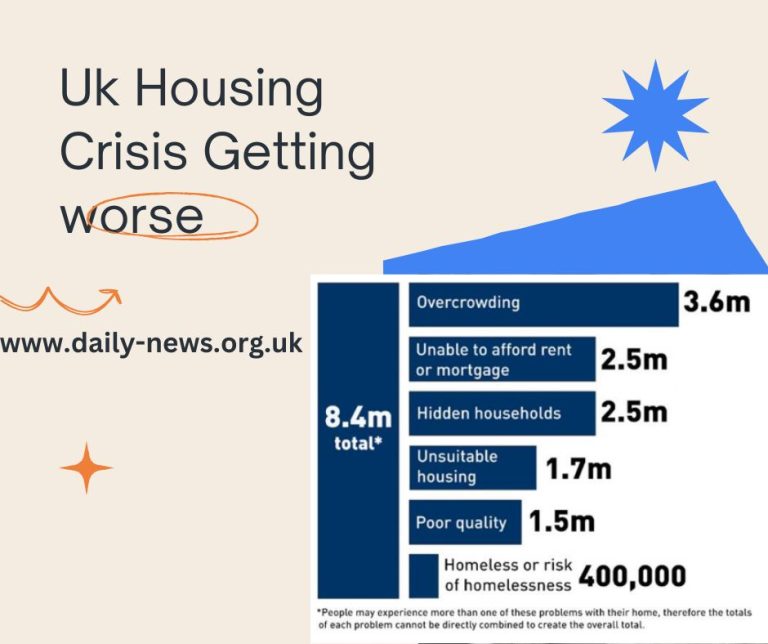The UK housing crisis is getting worse with every passing year. Multiple factors contribute to this issue, ranging from economic trends to policy decisions.
Here, we explain the primary causes of the housing crisis in the UK, supported by recent data up to 2024.
You May Also Like : Who Are the Key Players in the UK Tech Industry?
1. Supply and Demand Imbalance
- Population Growth: The UK population has been steadily increasing, reaching approximately 67.1 million in 2024. This growth exerts pressure on the existing housing stock.
- Household Formation: The number of households is rising faster than the rate at which new homes are being built. In 2023, there were about 28 million households, and this number is expected to grow due to changing social patterns, such as more single-person households.
2. Slow Pace of New Housing Construction
- Construction Rates: Despite government targets, the construction of new homes remains insufficient. In 2023, the UK saw the completion of approximately 250,000 new homes, far short of the estimated 340,000 homes needed annually to meet demand.
- Planning Permission: Obtaining planning permission for new developments can be a lengthy and complex process, further slowing down the rate of new construction.
3. Affordability Issues
- Rising House Prices: House prices have surged significantly, with the average UK house price reaching £270,000 in early 2024, up from £230,000 in 2020.
- Stagnant Wages: Wage growth has not kept pace with the increase in house prices, making homeownership increasingly unaffordable for many. In 2023, the average wage growth was around 2.5% per year, while house prices grew by approximately 5% per year.
4. Rental Market Pressures
- High Rents: The rental market is also under strain, with rents increasing faster than wages. In London, for example, the average rent for a one-bedroom apartment reached £1,700 per month in 2024.
- Lack of Social Housing: There is a significant shortfall in social housing. As of 2023, there were over 1 million households on waiting lists for social housing.
5. Policy and Investment Issues
- Government Policies: Policies such as Help to Buy have been criticized for inflating house prices by increasing demand without a corresponding increase in supply.
- Investment in Housing: There has been inadequate investment in housing infrastructure, both from the public and private sectors. In 2023, public investment in housing was about £12 billion, which many experts argue is insufficient.
6. Economic Factors
- Interest Rates: Rising interest rates have increased mortgage costs. As of mid-2024, the Bank of England’s base rate was 4%, leading to higher monthly mortgage payments for homeowners.
- Inflation: General inflation has also affected the cost of building materials and labour, making construction more expensive and slowing down new developments.
7. Impact of Brexit and COVID-19
- Labour Shortages: Post-Brexit immigration policies have led to a shortage of skilled labour in the construction industry. The COVID-19 pandemic further exacerbated this issue by disrupting supply chains and construction projects.
- Economic Uncertainty: Both Brexit and the pandemic have contributed to economic uncertainty, affecting investment in housing development.
8. Regional Disparities
- London and Southeast: The housing crisis is particularly acute in London and the Southeast, where demand is highest, and prices are most unaffordable.
- Other Regions: While other regions face their own challenges, the disparity in housing pressures is notable. For instance, house prices in the North of England remain relatively more affordable but still face issues of supply.


